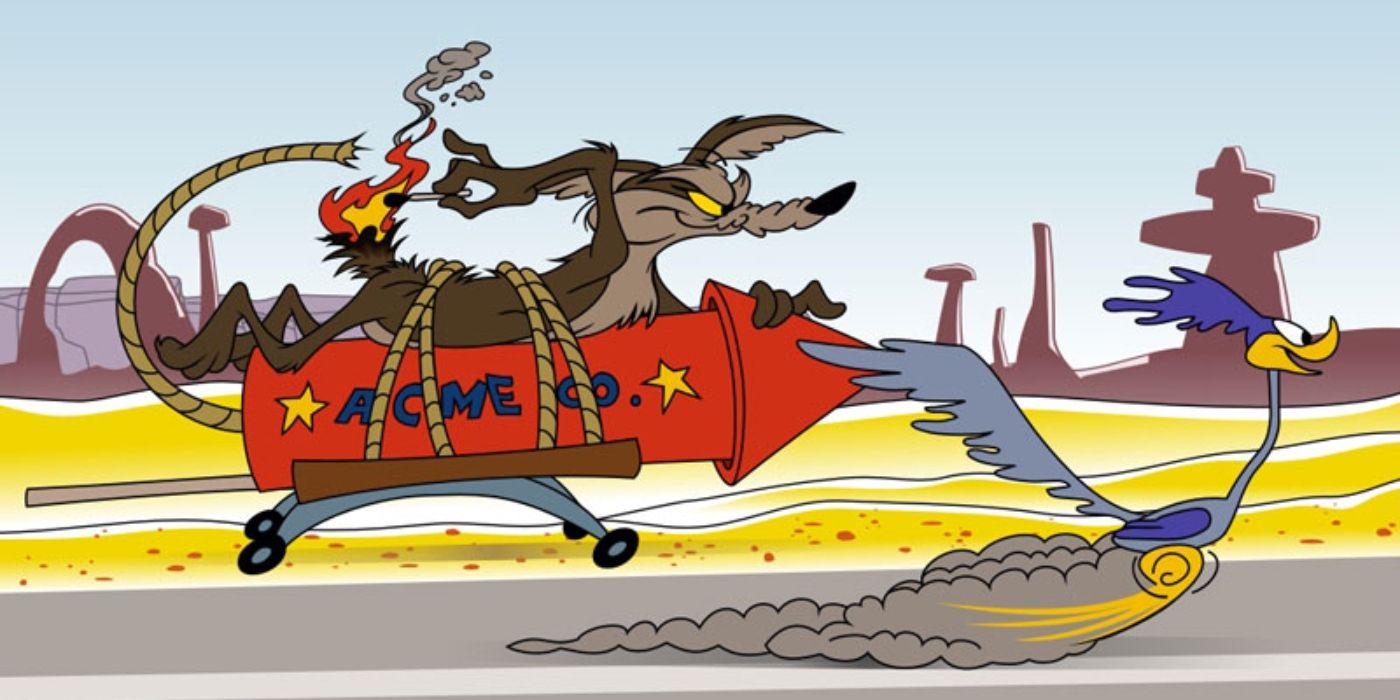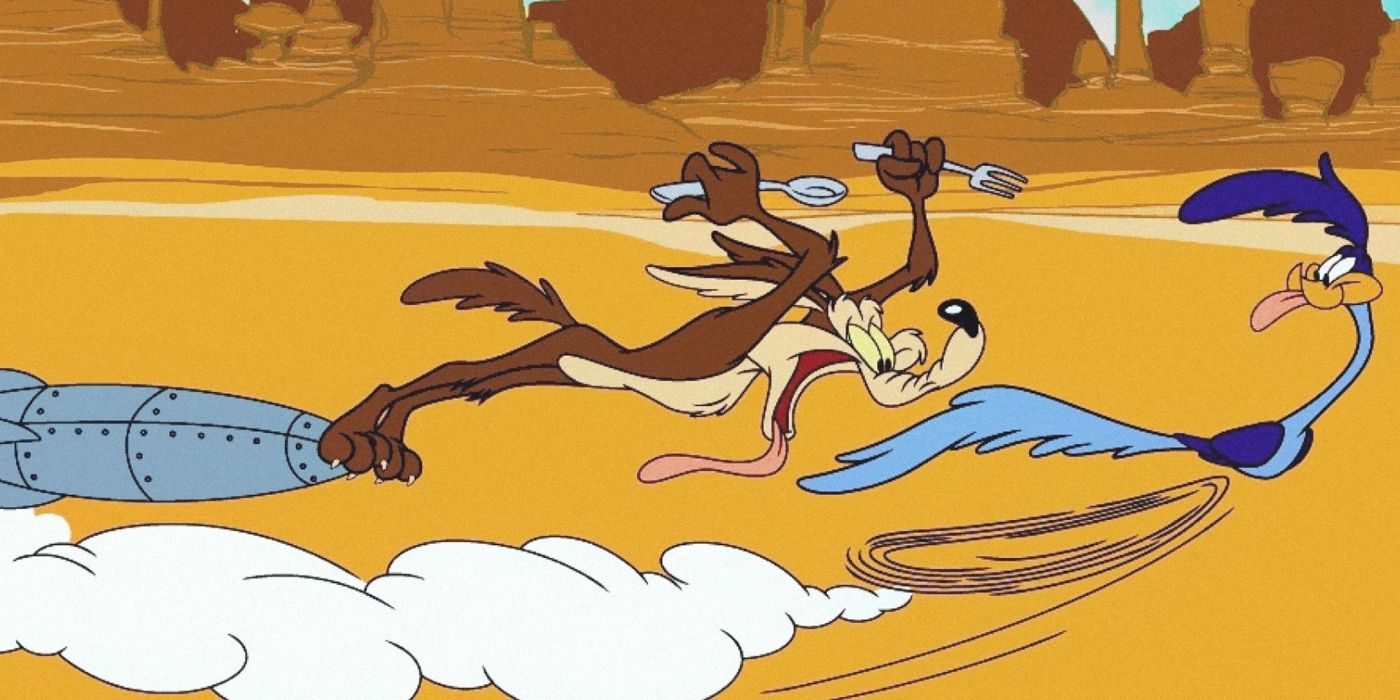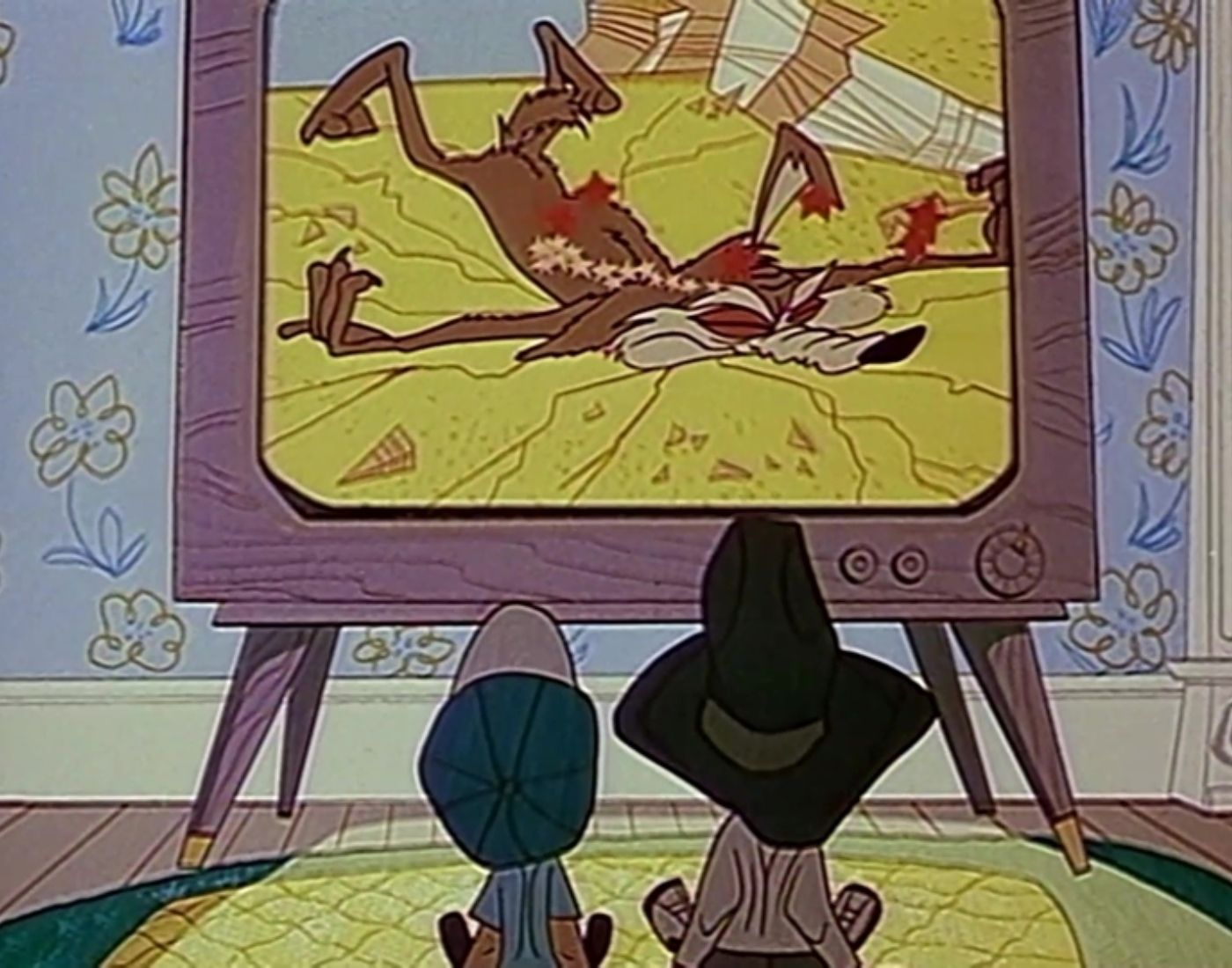Looney Tunes have always highlighted its inherent goofy nature, frequently trading any sense of realism or tension for a quick laugh. That meta-nature has been especially prevalent in adaptations of the show's characters -- and should be a consistent factor for one in particular, given his role in an upcoming film.
Coyote Vs. Acme could be a highly meta production, given the premise at the heart of the film. But this is far from the first time Wile E. Coyote has broken the fourth-wall -- with the early shorts codifying that aspect of the character.
Coyote Vs. Acme is currently set to debut in the summer of 2023, with John Cena and Will Forte playing the lawyers representing the Acme Company and Wile E. Coyote respectively. The film will be an animation/live-action hybrid, adapting Ian Frazier's New Yorker article "Coyote v. Acme." It's an inherently meta-concept, highlighting the goofy reality of Wile E. Coyote's perpetual failures to capture and eat the Road Runner, despite all the technology he's bought from the company. This leads the Coyote to bring a lawsuit against Acme. Even just the premise pokes fun at the history of the franchise and the importance that inept Acme products have played in his shorts over the years.
This isn't the first time the Looney Tunes characters have confronted their status as cartoon characters, especially in film. Who Framed Roger Rabbit?, the Space Jam films, and Looney Tunes: Back in Action all highlighted real world people interacting with the cartoon characters. But Wile E. Coyote, more than any of them, has always been breaking the fourth wall. Debuting in 1949's Fast and Furry-ous (directed by the animation legend Chuck Jones), the typical Road Runner/Wile E. Coyote cartoon focuses on the latter's flawed attempts to kill the Road Runner. Largely dialogue-free, Wile E. would often-times communicate directly to the audience and the omniscient animator, expressing his frustrations or pleading for a break.
Unlike most Looney Tunes characters, Wile E. Coyote seems to keenly understand the cartoonish physics of his world and the overall lack of stakes, often only losing to the bizarre machinations of the world around him. This stands in stark contrast to his adventures pitted against Bugs Bunny, which are more dialogue-centric and focus on a Wile E. Coyote more ingrained in his world. The Looney Tunes shorts even explored this in 1965's "Zip Zip Hooray!" (directed by Jones). The short opens on the traditional chase between the two, before pulling out to reveal it's just a cartoon on TV. Two children watch the short and discuss why the Coyote even tries to capture the Road Runner -- something Wile E. also questions openly, discussing it with the boys and admitting that he just can't give up the chance to finally catch him.
It's an incredibly meta-textual short, with one of the boys noting with some dryness that if Wile E. ever won and truly captured the Road Runner, then there'd be no more Road Runner/Wile E. Coyote cartoons for them to enjoy. It's quietly a metaphysical question, pondering if the endless journey can be worth the lack of full payoff. When looking ahead to Wile E.'s next cinematic adventure, it might be worth remembering how heady his conflicts can become -- and that on top of some expected slapstick, there might be some unexpected layers to the film given the character's history with torching the fourth-wall.



